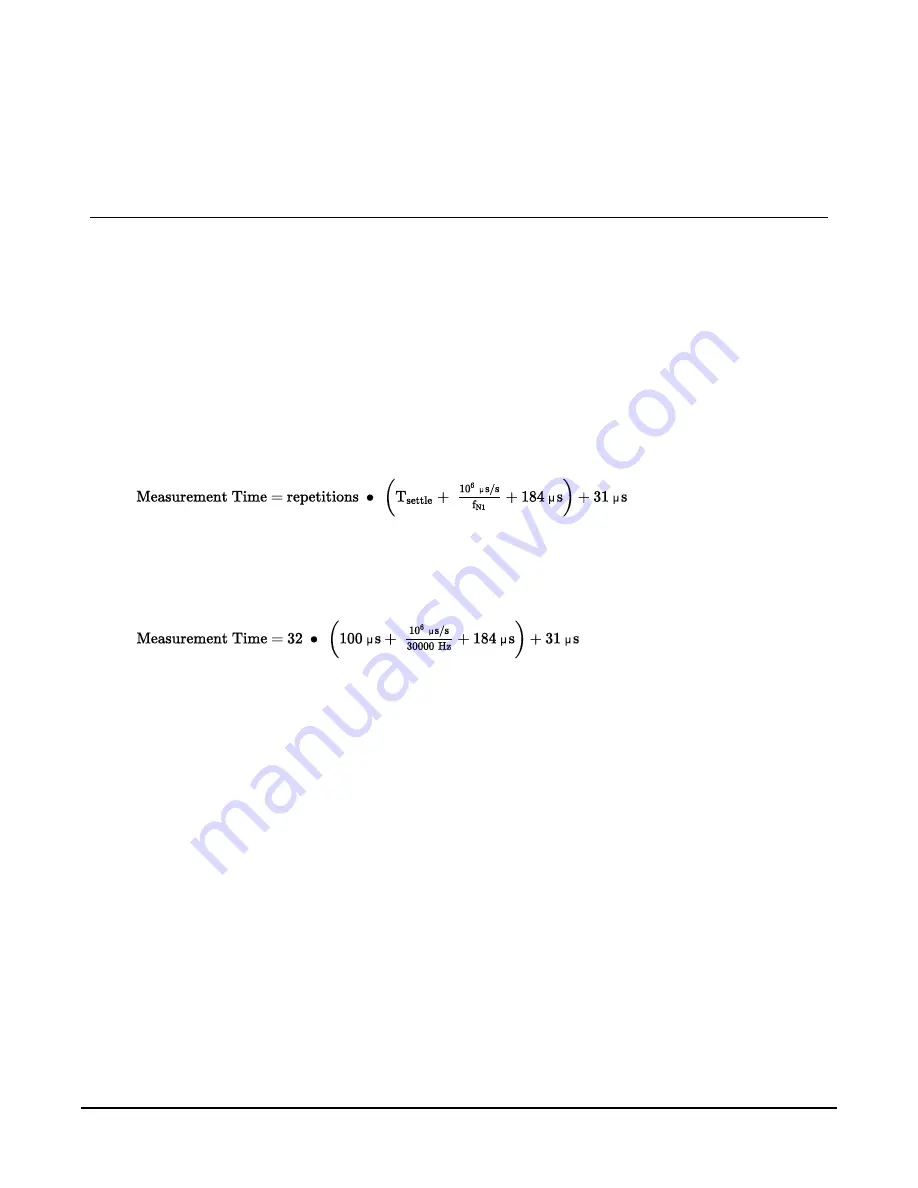
Appendix D. Calculating
network restrictions
This section shows some common questions asked while designing networks with VOLT 100
series and how to calculate their answers. For all examples, the VOLT 108 or VOLT 116 is
connected to a GRANITE 6 data logger.
D.1 Example 1
a. How fast can a VOLT 116 make 32 single-ended measurements?
The time to make 32 single-ended measurements (which are measurements without input
or excitation reversal) is copied below from
To make the fastest measurements possible, set f
N1
to its maximum (30000 Hz) and T
settle
to its minimum (100 µs). With these inputs and 32 repetitions, the fastest measurement
time is calculated as 10186 µs.
=10186 µs
The GRANITE 6 has a scan rate resolution of 1 ms, so the fastest scan rate possible in this
example is 11 ms.
b. Choosing a more practical scan rate of 20 ms, what is the longest cable that could be used
between the VOLT 116 and the GRANITE 6 to make these 32 measurements?
A scan rate of 20 ms (0.02 s) equals a measurement frequency of 50 Hz (1 ÷ 0.02 s). Using
the equation found in
(p. 36), the kilobits of data generated each
second is
Kilobits per second = (number of measurements) × (measurement frequency) × (0.064
kilobits per measurement)
= (32 measurements) × (50 Hz) × (0.064 kilobits per measurement)
= 102.4 kbps
VOLT 100 series
51





































